Business Services
Commercial Services
As F & EPC GmbH is a trade co. which is focused on international business affairs, its range of commercial services would directly imply to is executive business process. This company has a wide network of customers around the world along with partners located in different countries and business process of company include all the sub-processes from initial market research followed by detailed market study, design, labeling and development of a customized product for destination market, marketing, sale, transportation and customs affairs, delivery, distribution and price management in destination market, product promotion and advertisement and product life cycle management. Thus regarding F & EPC Business capabilities besides to gain achievements for its clients and customers, along with its own beneficiary, this company is ready to establish all types of new commercial cooperation which requires professional systematic interactions.
Market Research
F & EPC Corporation provides applied market research services to different companies in order to improve and expand domestic and foreign markets.
These services include issues on marketing and selling such as:
- Market analysis researches (including market division, target market selection in order to concentrate on activities and provide relevant strategies to select target market, determination of position in the market, demand estimation and forecasting)
- Selling products on the market
- Competitors analysis
- Customers analysis researches
- Environmental analysis researches
- Researches related to products
- Pricing researches
- Selling and distribution researches
- Promotion and advertising researches
- Consumer behavior researches
- Brand evaluation
Consultant Services
In order to provide services and give appropriate assistance to the customers, F & EPC GmbH, is ready to provide professional consulting services in commercial fields including export and import, marketing and sale, distribution, advertising and branding.
Some Product We Trade
Saffron
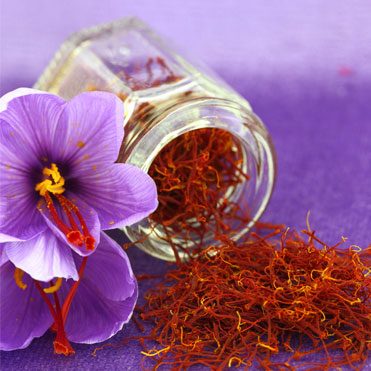
In ancient cultures, saffron was used to relieve stomachaches and kidney stones. They regulate the production of stomach acids and promote contractions of the uterine muscles. Saffron is also used to massage the gums in order to reduce inflammation and tenderness. Saffron oil can be used to treat insect bites and stings, heal throat irritation due to cough. It takes more than 4,500 flowers to yield a single ounce of the spice. The expense and efforts may be well worth considering the possible health benefits the spice offers. However, saffron must be used in moderation, as high doses are known to be toxic. Saffron, is the most expensive spice in the world which is being sold in the retail market in grams not in kgs. Since it takes 105 kgs of flowers to make only one kg of Saffron, it is so expensive.
Barberry
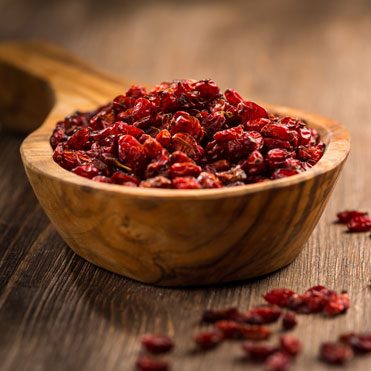
Medicinal use of barberry was dated back to more than 2,500 years. It has been used in Indian folk medicine to treat diarrhea, reduce fever, improve appetite, relieve upset stomach, and promote vigor, as well as a sense of well being. Today, it is widely used for medicinal purposes in Iran, including for biliary disorders (such as gallbladder disease) and heartburn. Barberry and goldenseal (Hydrastis canadensis) are often used for similar medicinal purposes because both herbs contain the chemical berberine. Berberine has been shown to inhibit the growth of bacteria in test tubes, and may help the immune system function better. The aqueous extract of barberry has beneficial effects on both the cardiovascular and neural systems. As such, it may be useful in the treatment of hypertension, tachycardia (rapid heartbeat), and some neuronal disorders, such as epilepsy and convulsions. Recent studies suggest that barberry also has antioxidant properties, and may help prevent certain types of cancer.
Pistachio
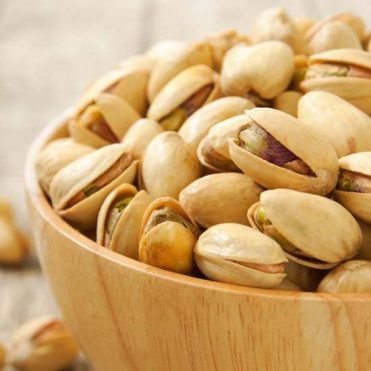
Pistachios are often eaten whole, either fresh or roasted and salted and also used in ice cream and confections such as baklava and cold cuts such as mortadella. Inhabitants of the American Midwest make pistachio salad, which includes fresh pistachio or pistachio pudding, cool whip, canned fruit and sometimes cottage cheese or marshmallows. In July 2003, the Food and Drug Administration (FDA) approved the first qualified health claim specific to nuts lowering the risk of heart disease: “ Scientific evidence suggests but does not prove that eating 1.5 ounces (42.5 g) per day of most nuts, such as pistachios, as part of a diet low in saturated fat and cholesterol may reduce the risk of heart disease” In research at Pennsylvania State University, pistachios in particular significantly reduced levels of low-density lipoprotein (LDL cholesterol) while increasing antioxidant levels in the serum of volunteers. In rates, consumption of pistachios as 20% of daily caloric intake increased beneficial high-density lipoprotein (HDL cholesterol) without lowering LDL cholesterol, and while reducing LDL oxidation.
Dried Fruits
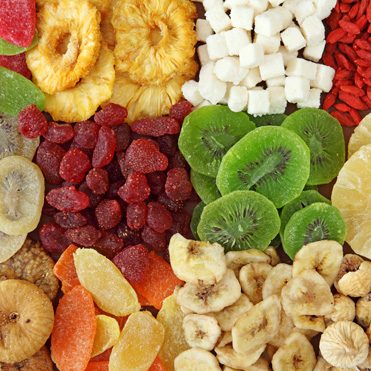
Dried fruits are that kind of fruits which has been removed majority of the original water content, through sun drying, or through the use of specialized dryers or dehydrators. Dried fruits have a long tradition of use is dated back to the fourth millennium BC in Mesopotamia, and is prized because of its sweet taste, nutritive value, and long shelf life. Today, dried fruits consumption is widespread. Nearly half of dried fruits which is sold are raisins, followed by dates, prunes, figs, apricots, peaches, apples and pears. These are referred to as “conventional” or “traditional” dried fruits: fruits that have been dried in the sun or in heated wind tunnel dryers. Many fruits such as cranberries, blueberries, cherries, strawberries and mango are infused with a sweetener (e.g. sucrose syrup) prior to drying. Some products like dried papaya, kiwi fruit and pineapple are most often candied fruit. Dried fruits retain most of the nutritional value of fresh fruits. The specific nutrient content of the different dried fruits reflects their fresh counterpart and the processing method.
Date
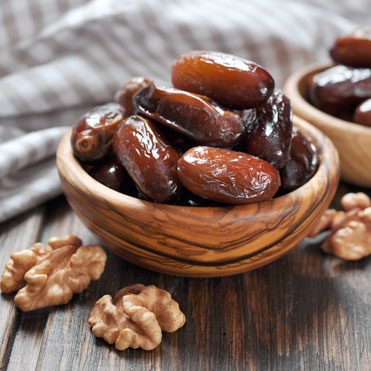
Lorem ipsum dolor sit amet, consectetuer adipiscing elit. Aenean commodo ligula eget dolor. Aenean massa. Cum sociis natoque penatibus et magnis dis parturient montes, nascetur ridiculus mus. Donec quam felis, ultricies nec, pellentesque eu, pretium quis, sem. Nulla consequat massa quis enim. Donec pede justo, fringilla vel, aliquet nec, vulputate eget, arcu. In enim justo, rhoncus ut, imperdiet a, venenatis vitae, justo. Nullam dictum felis eu pede mollis pretium. Integer tincidunt. Cras dapibus. Vivamus elementum semper nisi. Aenean vulputate eleifend tellus. Aenean leo ligula, porttitor eu, consequat vitae, eleifend ac, enim. Aliquam lorem ante, dapibus in, viverra quis, feugiat a,
Medicinal Plants
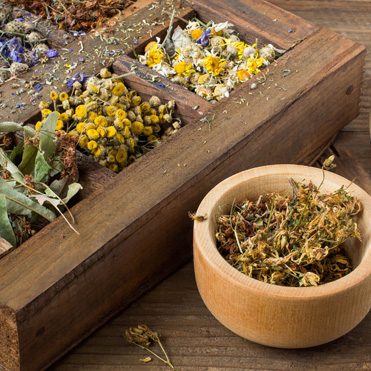
Medicinal plants have been identified and used throughout human history. Plants make many chemical compounds that are for biological functions, including defense against insects, fungi and herbivorous mammals. At least 12,000 such compounds have been isolated so far; a number estimated to be less than 10% of the total. Chemical compounds in plants mediate their effect on the human body through processes identical to those already well understood for the chemical compounds in conventional drugs; thus herbal medicines do not differ greatly from conventional drugs in terms of how they work. This enables herbal medicines to have beneficial pharmacology, but also gives them the same potential as conventional pharmaceutical drugs to cause harmful side effects. Moreover plant material comes with a variety of compounds which may have undesired effects, though these can be reduced by processing.
Raisin
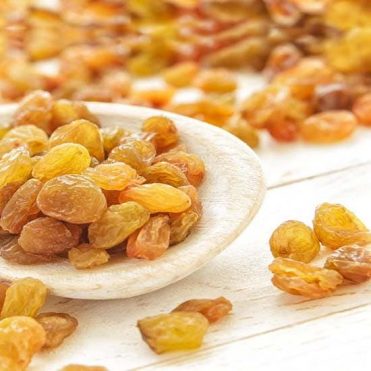
Raisin varieties depend on the type of grape used. Seedless varieties include the Sultana (also known as “Thompson Seedless” in the USA) and Flame. Raisins are typically sun-dried, but may also be “water-dipped”, or dehydrated. “Golden raisin” is made from Sultans, treated with Sulfur Dioxide (SO2), and flame dried to give them their characteristic color. A particular variety of seedless grape, the Black Corinth, is also sun dried to produce Zante currants, mini raisins that are much darker in color and have a tart, tangy flavor. Several varieties of raisins are produced in Asia and in the west, are only available at ethnic specialty grocers. Green raisins are produced in Iran. Raisins have a variety of colors (green, black, and blue, purple, yellow) and sizes.
Dry Vegetables
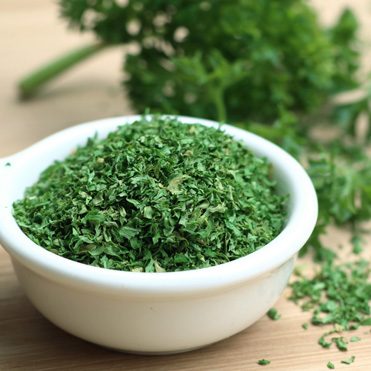
Vegetables are one of the healthiest and most important part of our daily nutrition. In addition to their various properties, they also used for medicinal purposes. Each cooking style has its own vegetables. Rosemary, Thyme, Parsley are used more than other vegetables in Italian cuisine. Some vegetables such as basil, cilantro, dill, and tarragon organo flavoring appropriate for people who are banned from the use of salt in food. If you are using the dry vegetables, its value is reduced to one-third of fresh vegetables because aroma of dry vegetables is stronger than fresh one. Besides we can always have dry vegetables.
Spices

Spices have many beneficial properties that are important in diseases prevention or treatment and health issues, any kind of specie (eg. cardamom, ginger, paprika, sumac, clove, cinnamon, nutmeg, caraway and so on.) has its own special properties.


